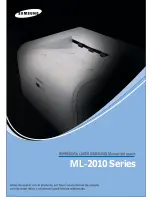
One very easy place to do this is with the model itself. Develop your experience printing
the same model over and over until you nail it. Even with a simple model, you can (and should)
approach printing it with a methodical approach from the ground up. That's the next strategy.
#3 Practice in Measures.
I play guitar and was basically self taught. When I found new music to learn, I did what
many untrained folks do and practiced the part over and over again from beginning to end. If I
made a mistake, I started over. Then, I took lessons from a trained musician. My very first
lesson was worth every penny! My instructor watched me learn a piece and then said "Practice
in Measures". What he meant by this was to learn the first measure (music is divided into small
blocks of notes called measures which are small and relatively simple). Practice it until it is
perfect. Then, practice the second measure until it's perfect. Next, combine the first and second
measures until that is perfect. Continue in this way until you've learned all the measures and
combinations of them. In complex pieces, there will be a few measures or sequences of
measures where you need to put in a lot more practice.
The advantage of this approach, my instructor said, is that you are not wasting lots of
time playing measures you already know. The practice of playing from the start until you reach a
difficult spot and make a mistake is that you play, say, 30 seconds (or more) of music you
already know to hit a 1 second spot you need to practice. So in a 30 minute practice session
you are really only practicing what you need to practice for 1 minute! This completely changed
my approach to practicing everything from guitar to 3D printing to machining to learning CAD, to
...
How does this apply to 3D printing? Easily, start with a simple object to print and practice
nailing the first layer. Once you have that nailed, print the rest of the object. Once you have the
entire object printed successfully, change slicing parameters and start over (nail the first
layer, ...). Practice in measures.
I can't say enough about getting that first layer right, the subject of the next strategy.
#4 Nail the First Layer.
I don't believe folks spend enough time learning to print a perfect first layer reliably. If
there are defects in the first layer, they will invariably come back later to bite you - the part
separating form the build plate or a defect in the part. Trying to print a good (or great) first layer
is probably one of the most frustrating experiences for most, it is also the most critical. Here's
where strategy #3 comes to play, don't continue a print on an inferior first layer! Abort the print
and start that first layer again and again until you nail it. Why waste time on a part that will most
likely fail or not be useful? Each time you print a first layer,
measure it
! If you tell your slicer to
print a 0.20mm first layer, then it should be pretty darn close to 0.20mm. If it isn't, you've
identified a variable that you can easily fix and nail down (Z height). 0.20mm is not a lot and
unless you have highly calibrated eyes, you can't tell the difference between 0.20 and 0.15mm,
but your printer sure can. At 0.15mm the first layer is going to squish onto the print surface.
63









































